We left Lisbon, ending a fabulous six-night visit in Portugal’s urban and energetic capitol city. Driving just an hour to the east, we enter the Alentejo region of Portugal. We exit the highway and explore, meandering backroads. We pass cork forests, olive trees, golden wheat fields. There are vineyards. Towns and villages here are small. Here, we will spend three nights in an historic hotel; Portugal’s Hotel Convento de São Paulo, a monastery founded in 1182.
Editor’s Note: This article first appeared in the August-September 2023
issue of Upscale Living Magazine, available on Issuu.
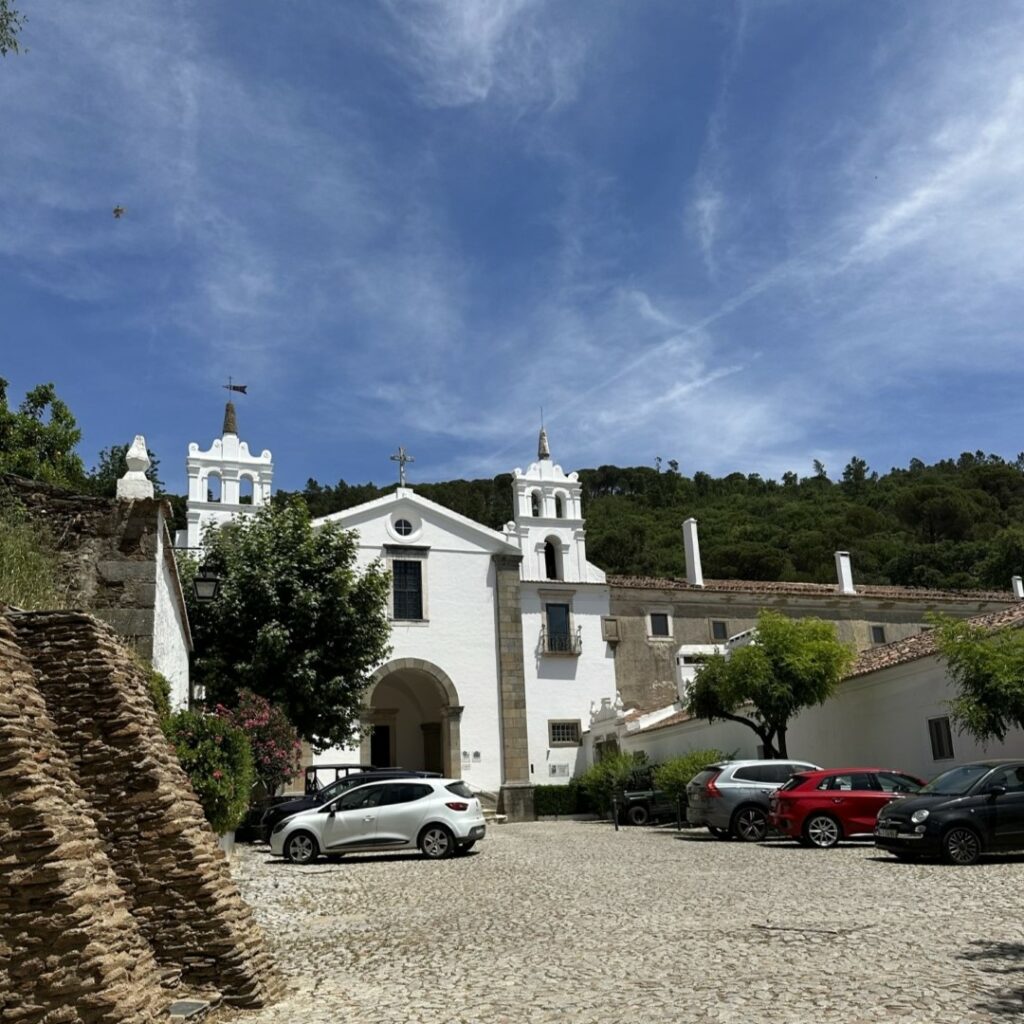
(Photo by Nancy Zaffaro)
Portugal’s Alentejo Region
Most visitors come to the Alentejo to visit the beautiful town of Évora, one of Portugal’s best preserved medieval towns, with bonus Roman ruins. During our time here, we visit Évora and the town of Arraiolos, where local women have been making unique embroidered rugs since at least the 14th century. We see some of the 7,500-year-old neolithic structures dotted around the region., And yes, we enjoy the local cuisine and wines, and relax poolside.
The Alentejo region, the country’s largest, would be a decidedly different slice of Portugal. I was excited to stay in a room where 12th century monks lived, worked, slept, and worshipped. But I wasn’t prepared for the hotel to catch my heart.
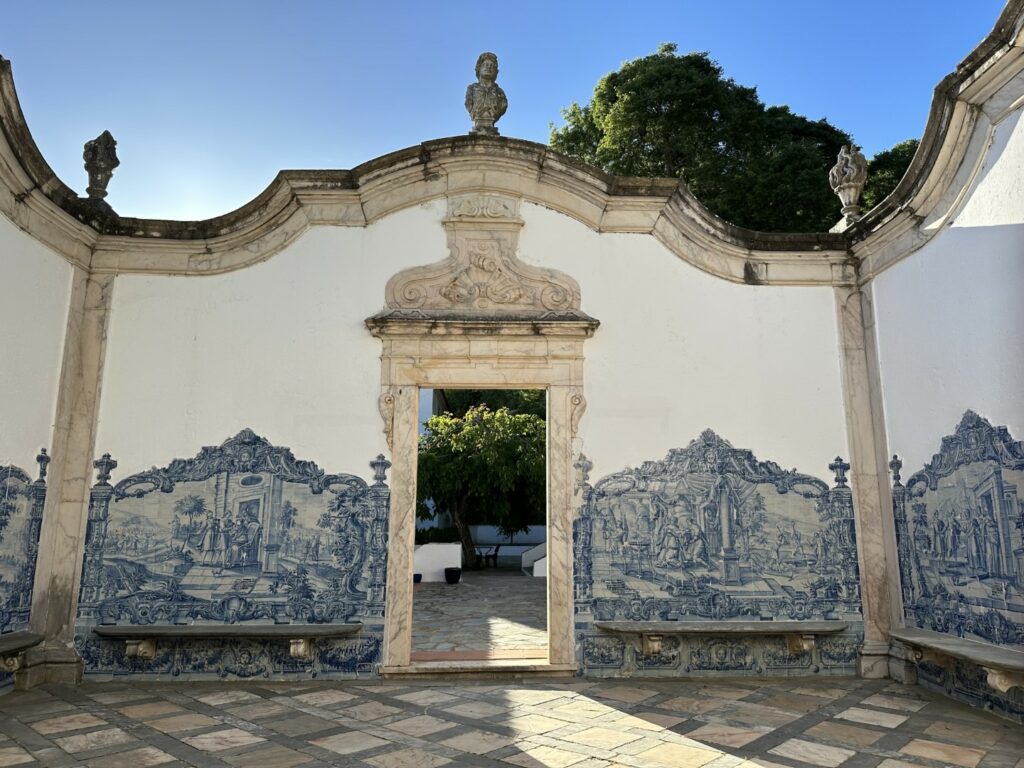
(Photo by Nancy Zaffaro)
A Long History
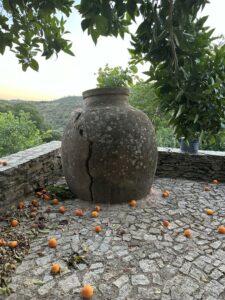
(Photo by Nancy Zaffaro)
The Convento de São Paulo was built in 1182. It was expanded and renovated in 1400, 1578, and 1796. Portugal became a country in 1139 and is the oldest country in Europe. It was King Sancho I, the second king of Portugal who built the monastery. Several Portuguese kings and queens have stayed and worshiped there.
The monastery’s site as a holy place goes back even further. It was a hermitage back in 315, which an earthquake destroyed in 446. It’s believed that heroes fighting the Romans were protected and saints were martyred here.
One of the most notable features found throughout the Convento are some 54,000 blue and white tiles. It’s said to be the largest private collection of Portuguese tiles. Many of the tiles were made by some of the most well-regarded artisans at the time. Some of the tiles are signed. They were installed between 1640 to 1810.
Religious orders were banned by the government in 1834 and years later, the property was purchased with dowry money by Henriqueta Leotte Tavares. The property was maintained by the family and later turned into a hotel. In 1993, her descendants established the Fundacão Henrique Leotea, the foundation through which the hotel is managed and maintained.
The sprawling property sits on 2,400 acres.
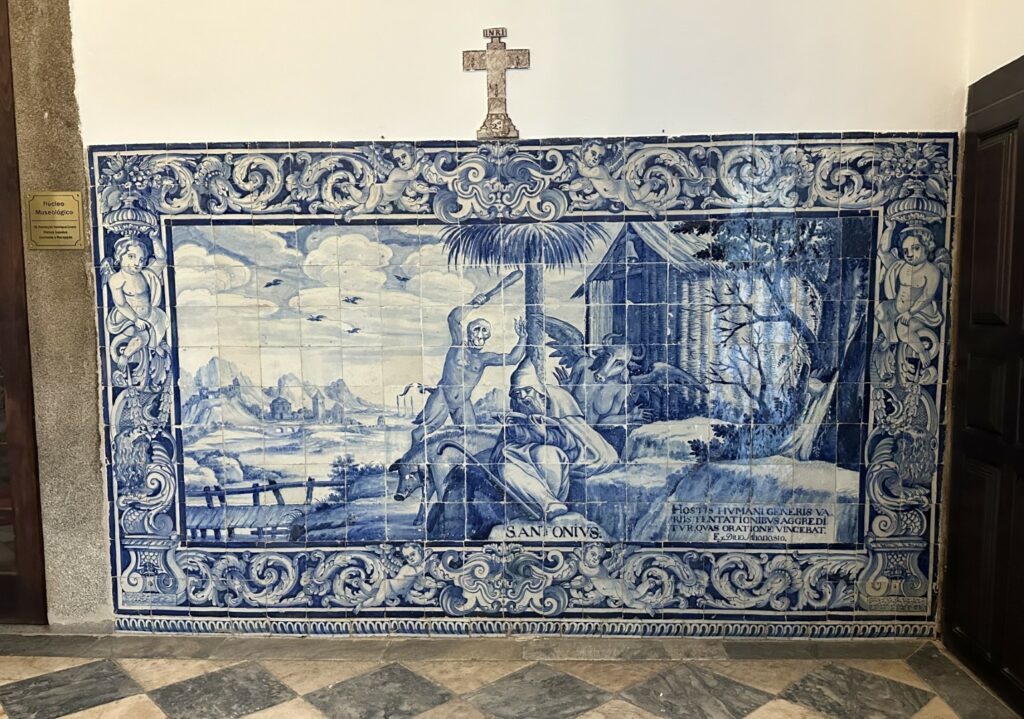
(Photo by Nancy Zaffaro)
Rooms at the Hotel
The Convento currently has 43 rooms, six of them suites. Rita, with whom I corresponded, welcomes us upon arrival. She provides an overview of the property, and with a smile, encourages us to explore. Over our stay, she gives helpful recommendations about the region. The Alentejo is her home, and her genuine affection for the Convento comes across.
Most of the rooms are in the main original building. There are also the Annex rooms, on the site of the old stables.
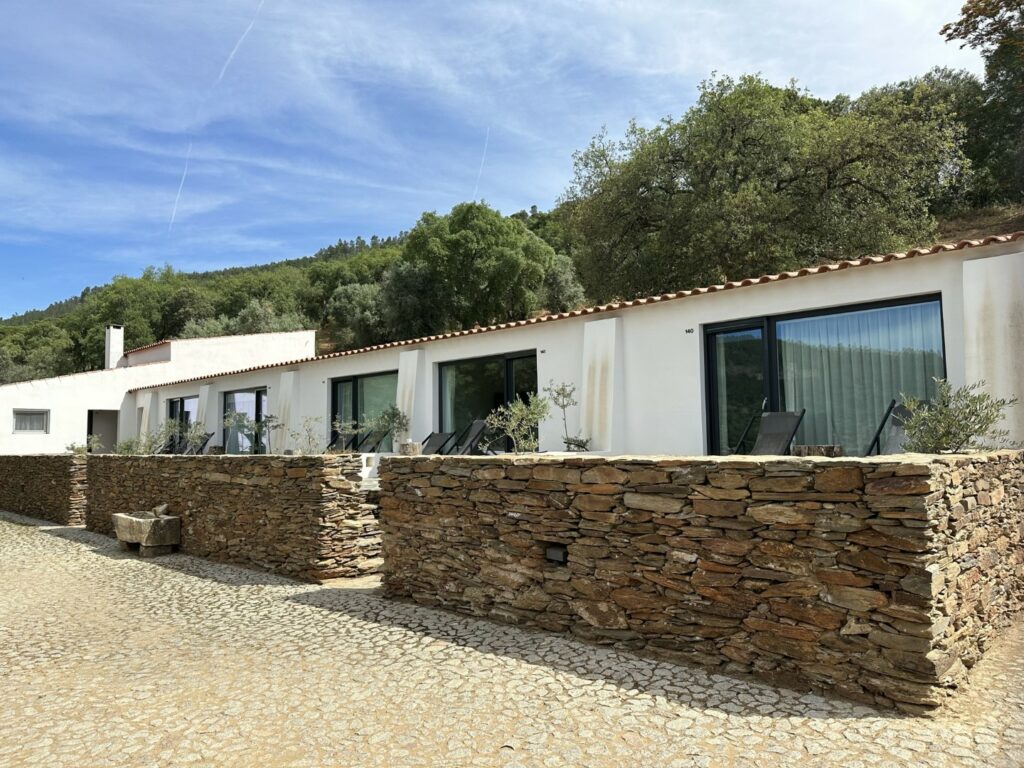
(Photo by Nancy Zaffaro)
Monks Slept Here
Rooms are large. Oh-so-long-ago, monks slept here. The walls and ceilings are whitewashed, high and curved. Each room has a massive fireplace. The wood doors and shutters are impressively carved and thick. The floor is tiled in a wishbone pattern. Rooms have flat-paneled televisions. Some have private patios or decks. Rooms are air-conditioned and heated with efficient mini splits.
We open the windows to fresh breeze at night, which is lovely. In the morning, we smell the oranges from the tree just outside.
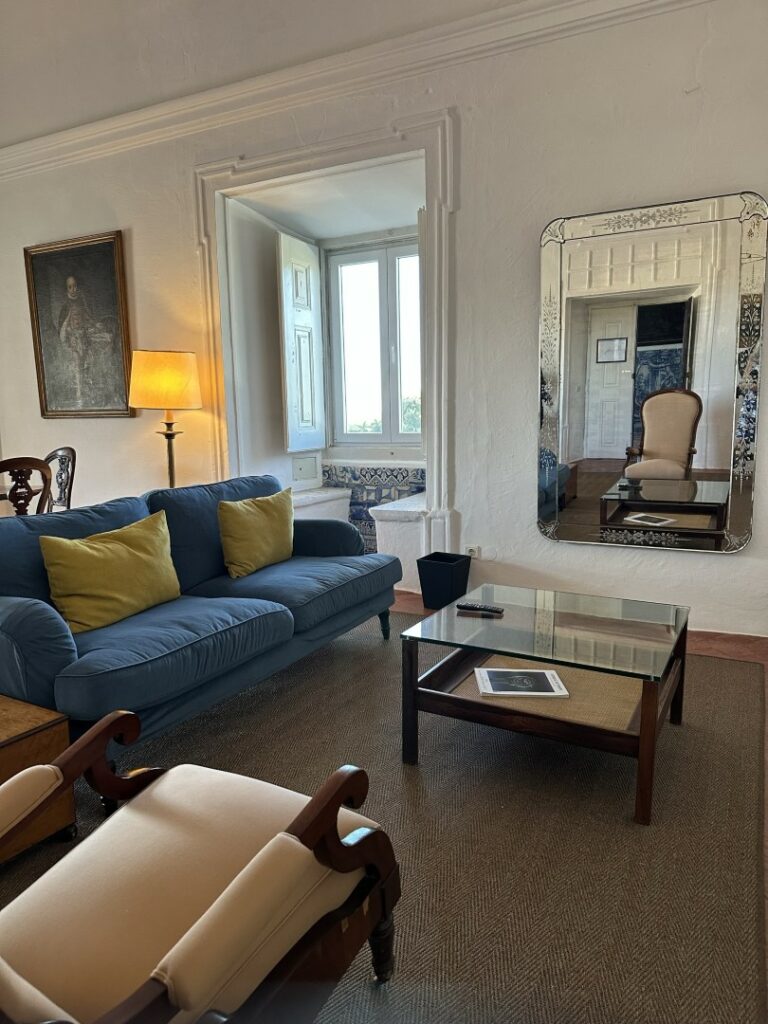
(Photo by Nancy Zaffaro)
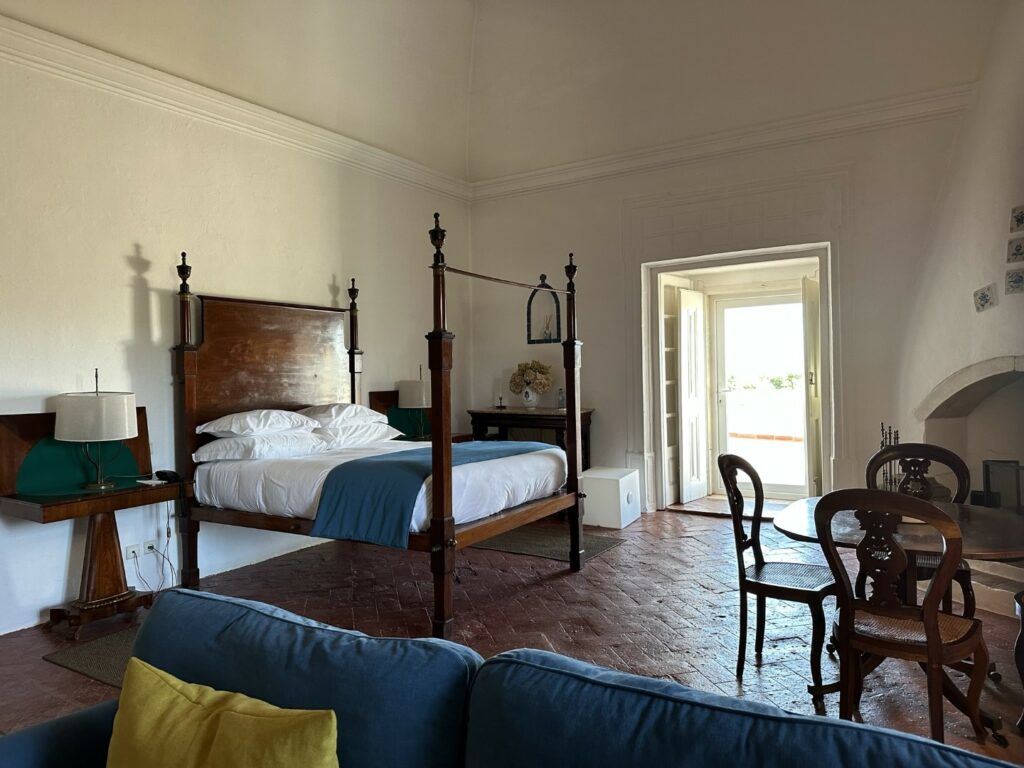
(Photo by Nancy Zaffaro)
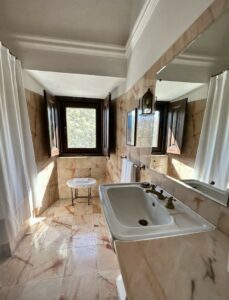
(Photo by Nancy Zaffaro)
The bathroom floors and much of the walls are covered in pink marble. The marble is from nearby Estremoz and is used extensively throughout the hotel. Bathroom fixtures are big and heavy brass. The water pressure is strong and hot.
Do stay in one of the finely furnished and comfortable suites. But know that even these do not have some of the amenities of most luxe hotels. You won’t find in-room tea and coffee service or a bar station in your room. There is no refrigerator. Outlets are few. Internet can be spotty in the rooms, although is fine in the main common areas. Don’t be deterred and don’t miss the magic. After all this time, these buildings stand, and they welcome us.
In bed that night, images roll over me. I picture monks walking these long halls, each with their own religious, spiritual, intellectual, and economic reasons that led them to this life.
Exploring the Convento Grounds
We wander. And wander. Outdoors, but within the walls of the Convento, manicured gardens, outdoor patios and decks beckoned. The Esplanade. The Water House. We help ourselves to a couple of sweet oranges from the trees. Large, cracked amphorae jars decorate patio corners. We find terra cotta statuary, lime trees, and a fountain in the antiquated Garden of the Novices. There are tennis courts, and two swimming pools. During our stay, when not touring, we swim and relax. We have cocktails poolside and chat with some of the international guests.
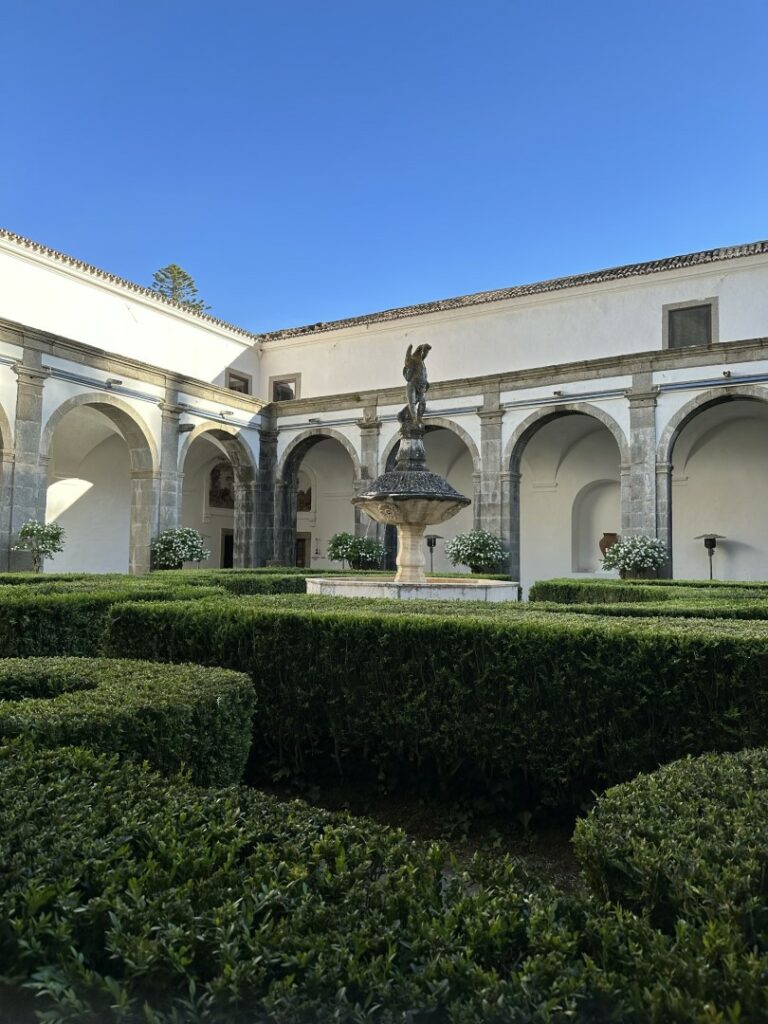
(Photo by Nancy Zaffaro)
Exploring Within the Convento
We explore indoors as well. Off the reception room, there’s an inviting sitting room.
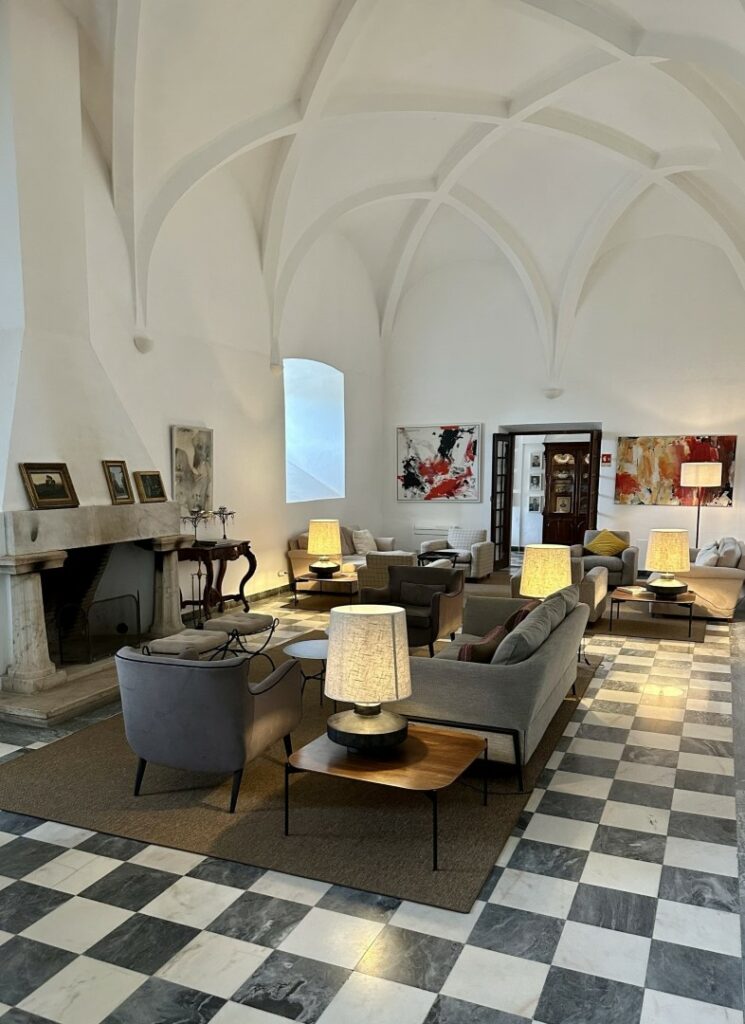
(Photo by Nancy Zaffaro)
We find two game rooms. The first offers ping pong, foosball, and snooker. The other, with a sweeping wood paneled ceiling, has a billiards table and seating by the fireplace that begs a good book and a glass of wine.
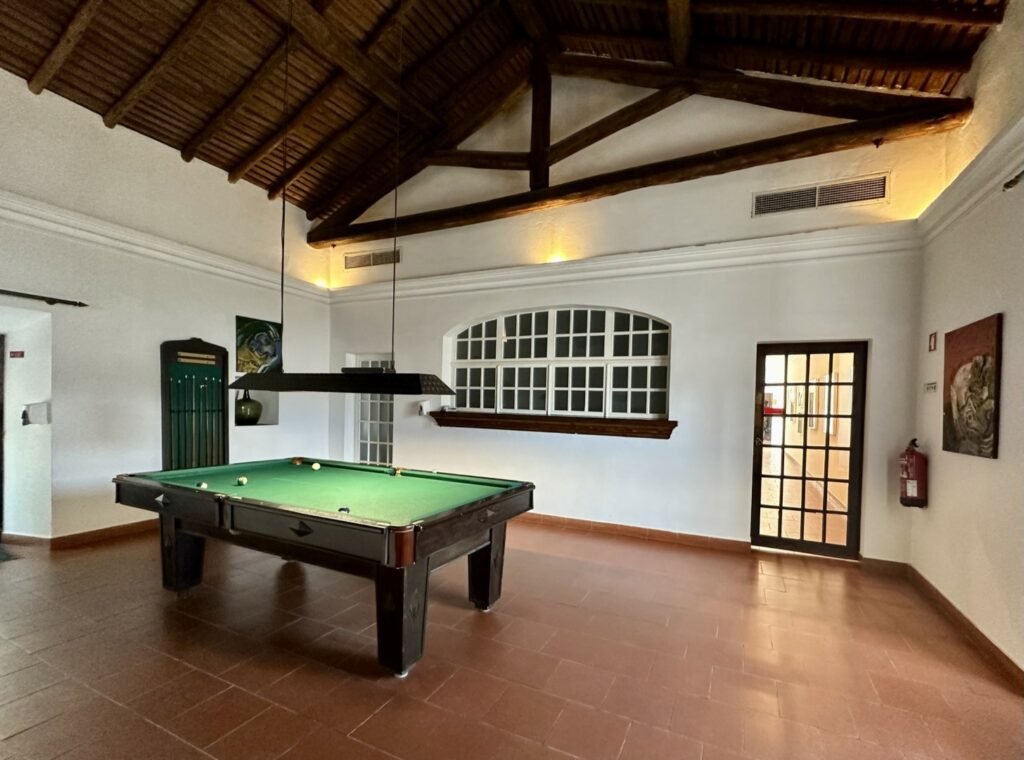
(Photo by Nancy Zaffaro)
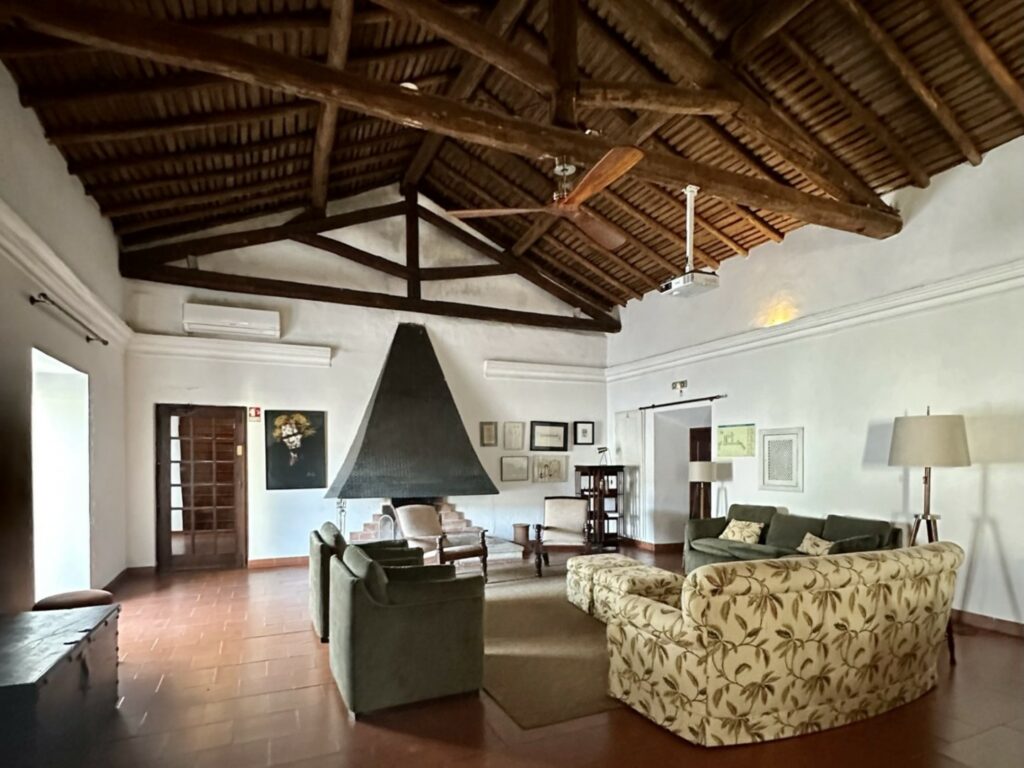
(Photo by Nancy Zaffaro)
Throughout, the art in the hotel is of great interest. The hotel’s contemporary art collection is spectacular.
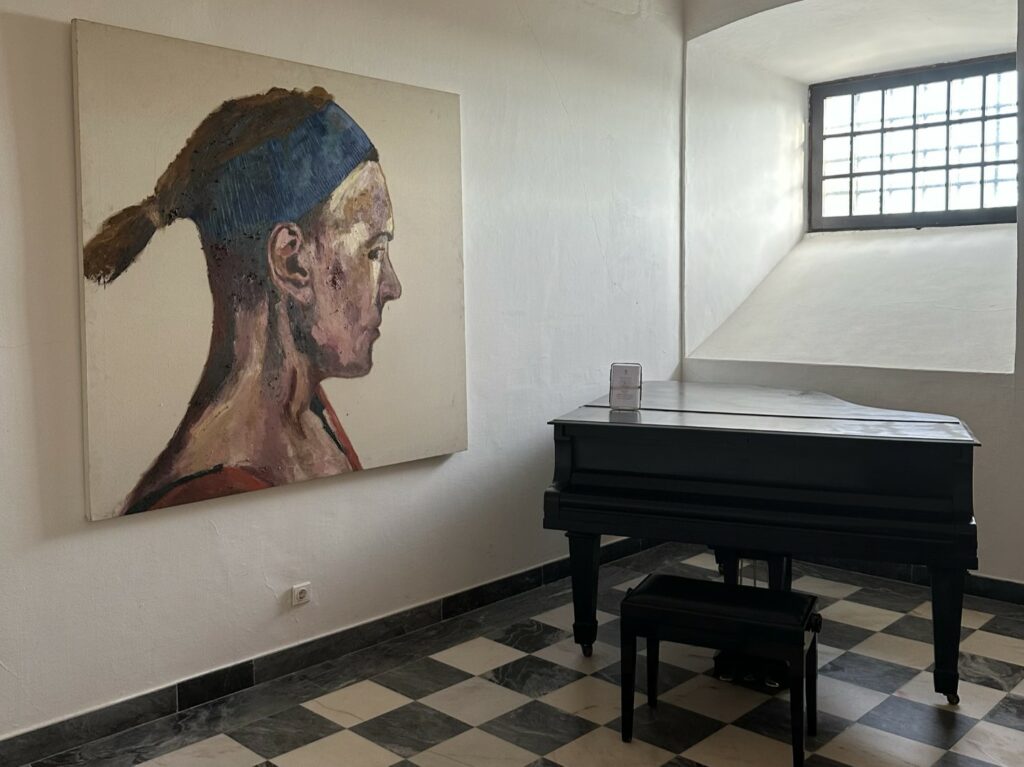
(Photo by Nancy Zaffaro)
The biggest surprise comes from the Chapel of Nossa Senhora da Conceição, or the Sanctuary of Our Lady of Conception. We stepped through the doors of the balcony not knowing it was a chapel. The impact is strong. Saying that the Convento is also a museum is an understatement. The frescos in the chapel are magnificent.
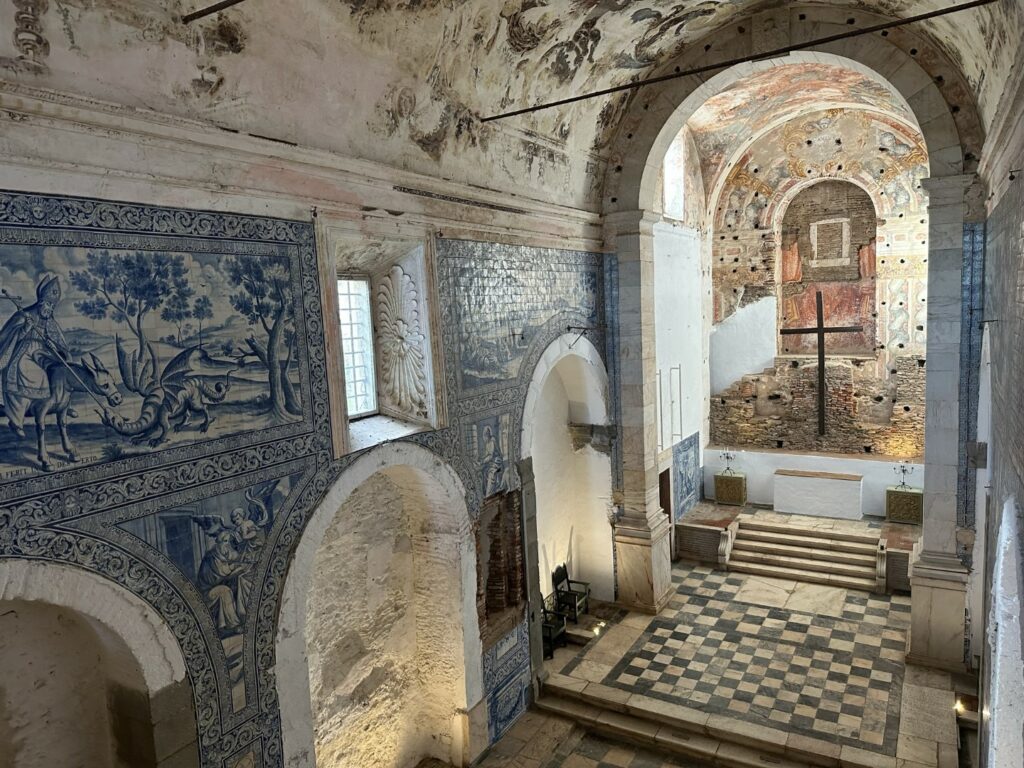
(Photo by Nancy Zaffaro)
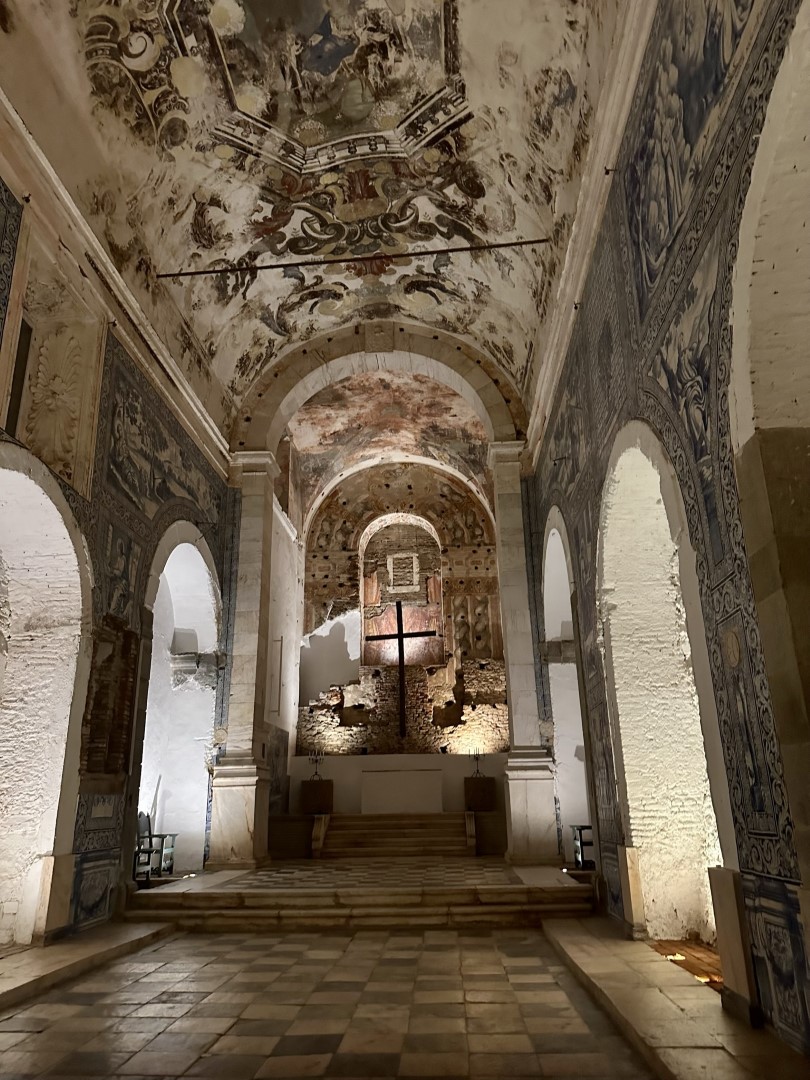
(Photo by Nancy Zaffaro)
It was late when we return back to our room. The hallway oil lamps are lit, creating shadows. I continue to visualize the everyday comings and goings of the monks.
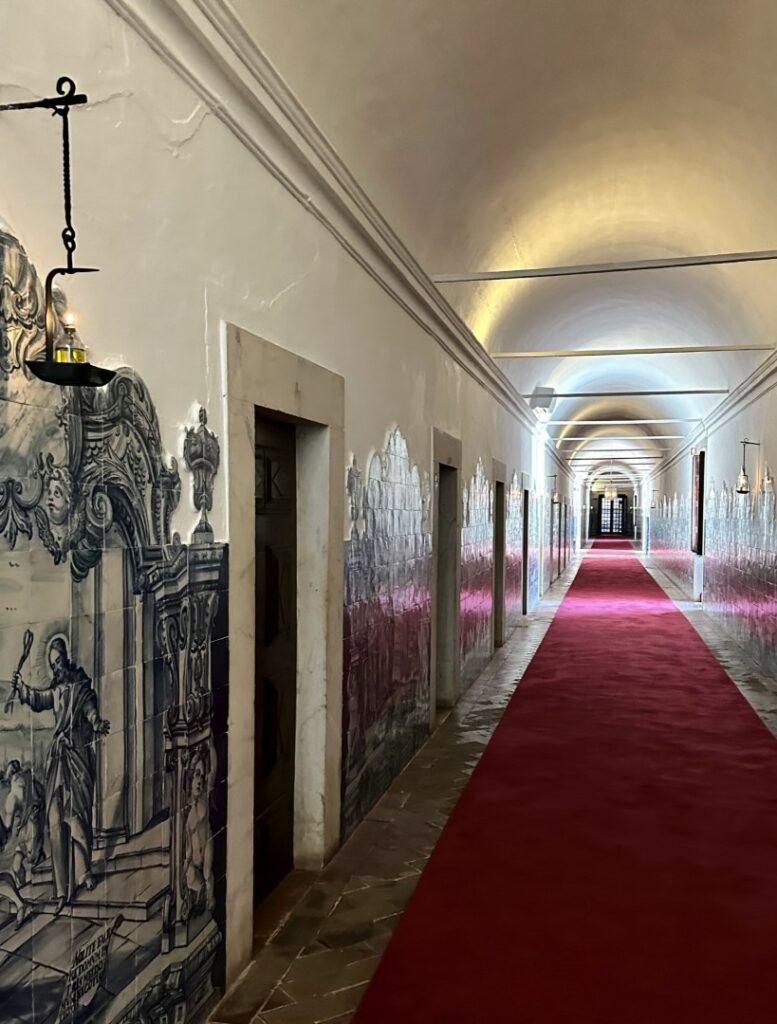
(Photo by Nancy Zaffaro)
Breakfast in the Frier’s Refectory
In the morning, we join other guests for breakfast in the Refeitério dos Frades, or the Frier’s Refectory. There is a buffet spread of breads and pastries, meats, cheeses, fruits, and nuts. Hot items included eggs, sausages and bacon and potatoes. And of course, fresh juices, tea, and coffee, as well as sparkling water and espumante.
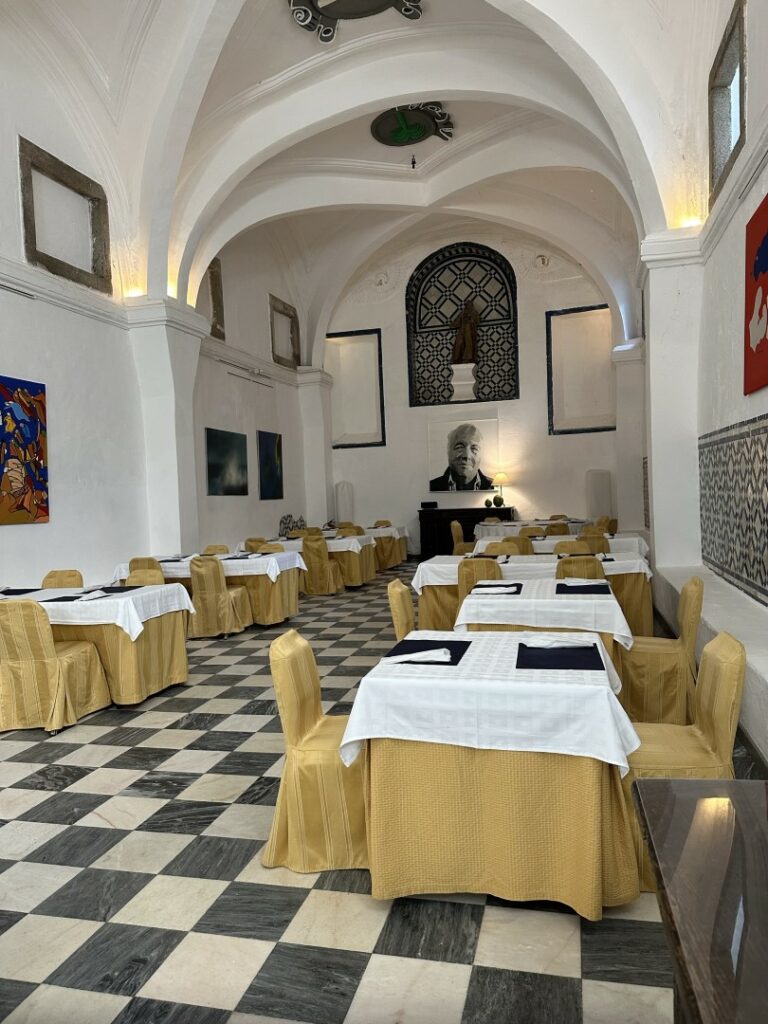
(Photo by Nancy Zaffaro)
Hiking (Just Some of) the 2,400-Acre Property
After breakfast, we hike one of the two well-marked trails on the property that take you further up the d’Ossa mountains. We begin our ascent, entering a grove of cork trees. You could see where the bark had been harvested from the base. Numbers painted on trees tell the year the bark was last harvested. The tree remains healthy, but it will be years before the bark can be harvested again.
There are pines and oaks and wildflowers. Trail signs describe some of the birds in the area. We continue to climb. The trail views are magnificent.
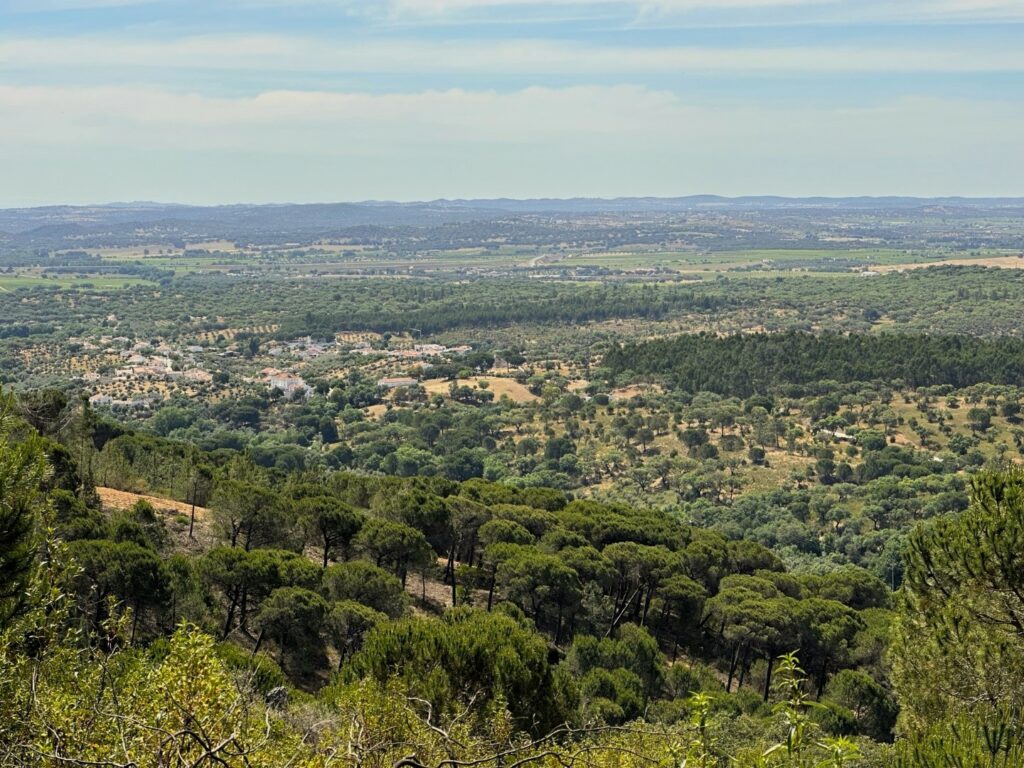
(Photo by Nancy Zaffaro)
Once we descend, we come to the olive trees we’d seen from the top of the trail. Sheep wander the trees. Babies nurse. We see stone ruins, aqueducts, and a stand of beehives.
It had gotten warm. We sit at a table in the courtyard and enjoy cups of espresso served with a cinnamon stick. Throughout Portugal, the coffee is delicious.
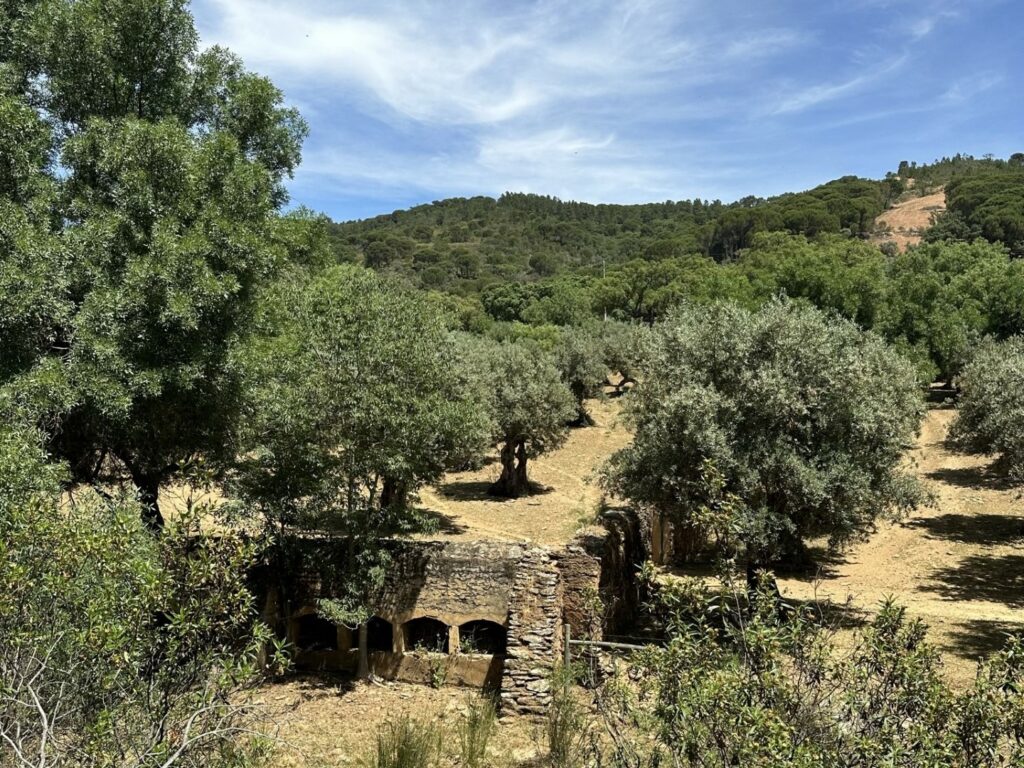
(Photo by Nancy Zaffaro)
O Ermita: Regional Cuisine and a Knowledgeable Sommelier
Dinner at the hotel’s restaurant, O Ermita, is a highlight. The restaurant, in the Capela do Bispo, or Bishop’s Chapel, is an elegant dining spot. It’s frequented by locals as well as hotel guests. Do make reservations when you book your stay.
Jorge, our gracious garçom, tells us that many of the vegetables and fruits, and the honey, olive oils and lamb meat come from the hotel’s own orchards, gardens and pastures.
Sommelier Fábio Nico shares both his pride in Alentejo local cuisine, as well as in their extensive wine cellar. Fábio’s suggested wine pairings, which we gratefully accept, are all from Alentejo vineyards and winemakers.
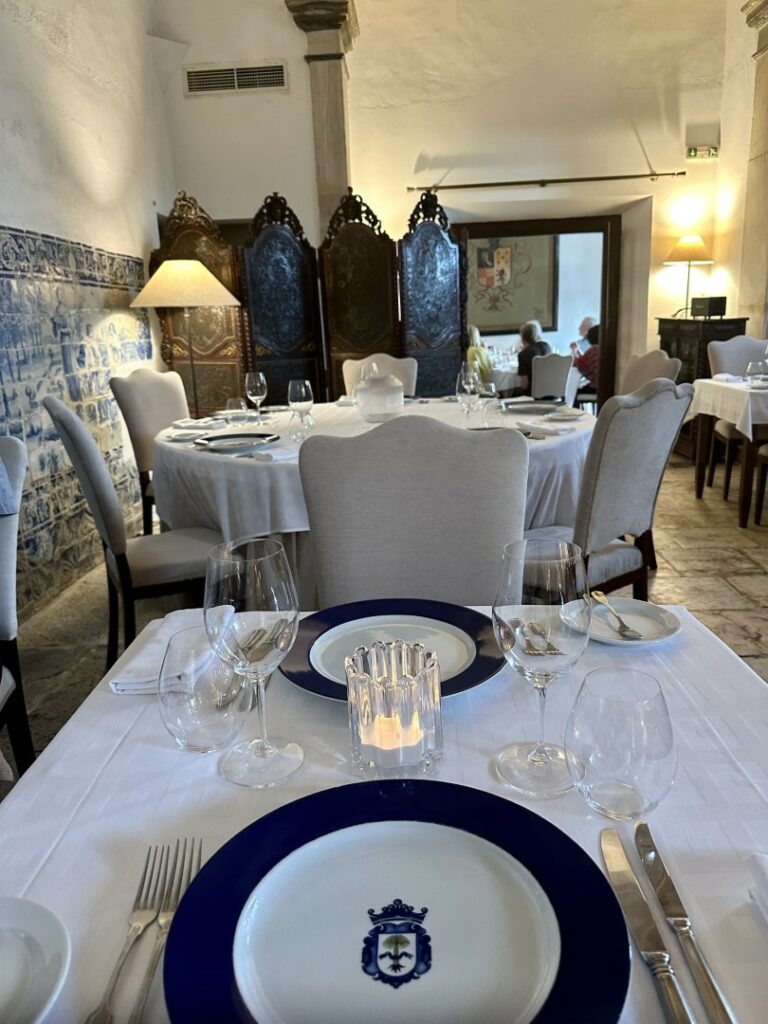
(Photo by Nancy Zaffaro)
Our Dinner at O Emrita
We begin with an entrada of sautéed mushrooms. Fábio pairs this with Foral D’Evora Branco Colheita, a 2020. From Cartuxa Vineyards, the wine is from the Portuguese grape, assario. A couvert of fresh bread and crisps and a lovely platter of jamón followed. We agree; you can only enthusiastically welcome a platter of Portuguese jamón.
O Emrita’s preparation of bacalhau, or codfish, was oh-so lightly battered, fresh and sweet. This was accompanied by roasted vegetables and a chickpea puree.
Fábio pairs this with Redondo’s Casa Relvas’ Herdade de São Miguel, a fresh rosé with wonderful minerals and hints of berries. We’d tromped through the very soils from which these grapes were grown just earlier that day.
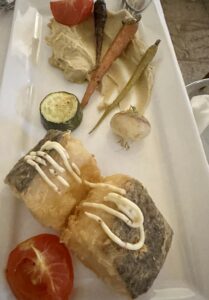
(Photo by Nancy Zaffaro)
Rack of lamb was next; a flavorful, well-prepared dish. The traditional, slow-cooked feijoadinha de cogomelos, beans with mushrooms, is the dish I must learn to make. He pours Tapada do Chaves, a 2015 Reserva red, made with the popular grape varietal, argonez. Delicious.
The Aletenjo is known for the wonderful meat of their black pigs. We shared one final dish; roast pork with mashed potatoes, broccoli rabe, and roasted plums. We enjoy it with another glass of the Tapada do Chaves.
It doesn’t seem possible, but we have dessert; a sweet torta of dried fruits, fresh orange, port wine, and honey. Fábio pours Adega de Borba’s Licoroso Branco. The Portuguese grape varietal is roupeiro, a favorite. Amber-colored, brandy-fortified, it is velvety smooth liqueur with a long finish.
Wonderful cuisine, wonderful atmosphere, and wonderful service.
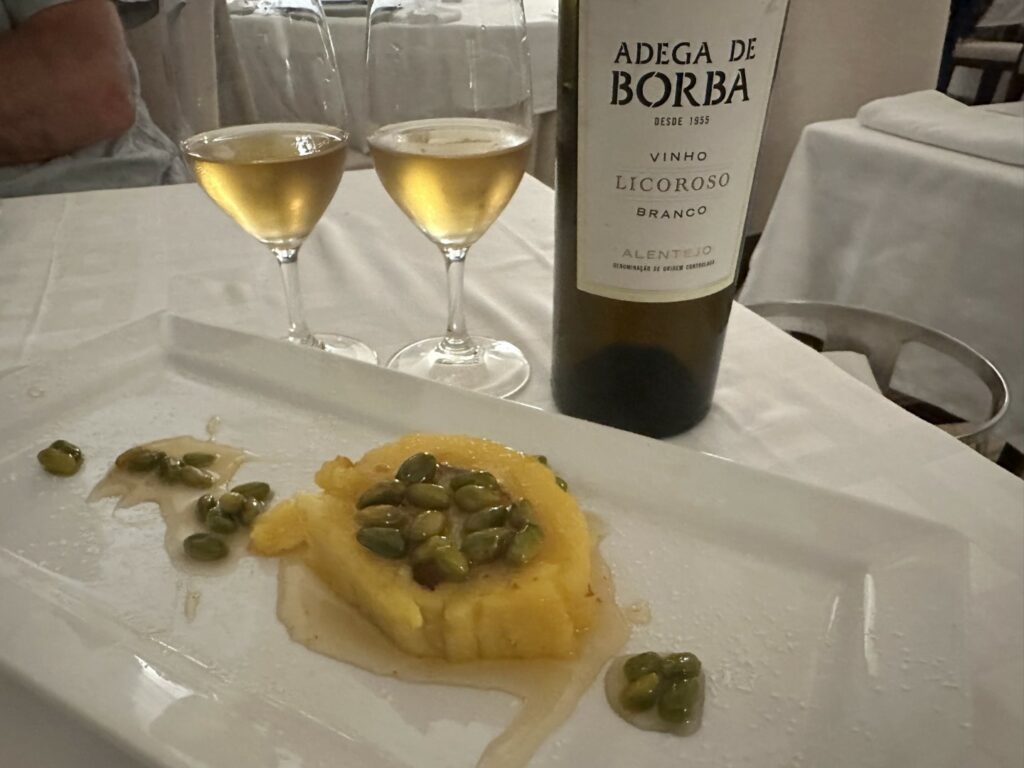
(Photo by Nancy Zaffaro)
Visit Portugal, Visit Portugal’s Hotel Convento de São Paulo
Portugal’s Hotel Convento de São Paulo left a strong impression. The Convento will remain a favorite place of mine, and I encourage readers to visit.
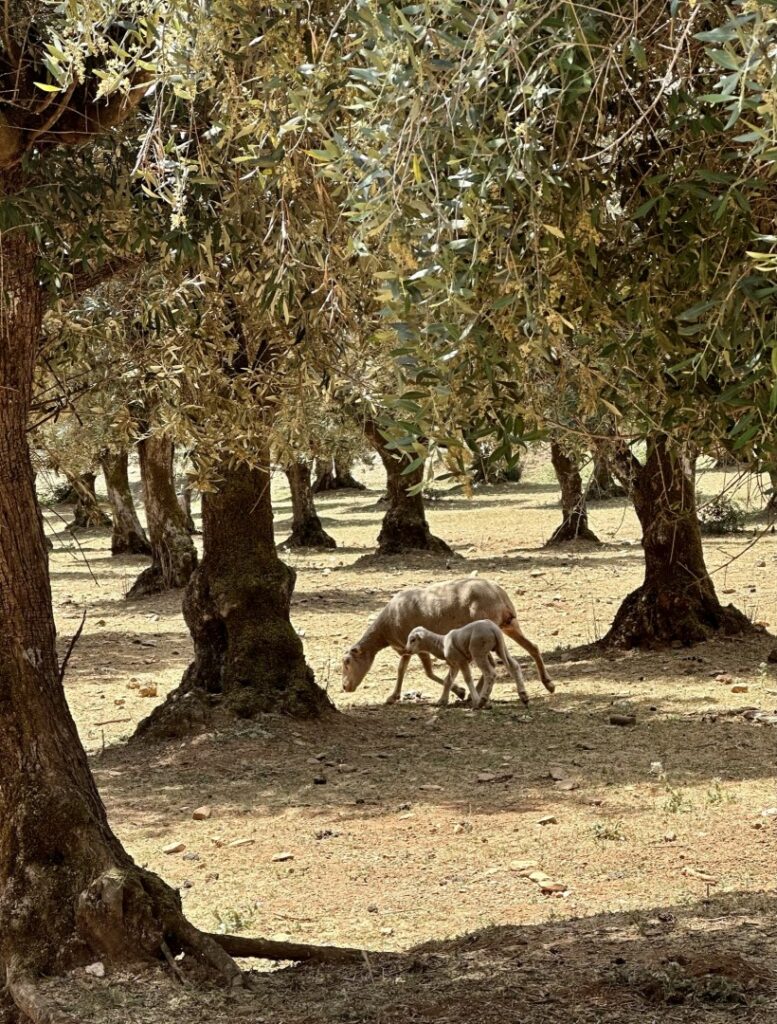
(Photo by Nancy Zaffaro)
For More:
- Visit the Hotel Convento de São Paulo
- Visit Portugal, official tourism site
- Visit Alentejo, official tourism site
- On our site: The Best Hidden Golf Courses in Portugal
- On our site: Include Madeira in your Portugal Itinerary
- Also on our site: Homestays in Portugal: A Great Option for Travelers
– All photos by Nancy Zaffaro.
Editor’s Note: This article first appeared in the August-September 2023 issue of Upscale Living Magazine. Available through Issuu. Visit their website at UpscaleLivingMag.


